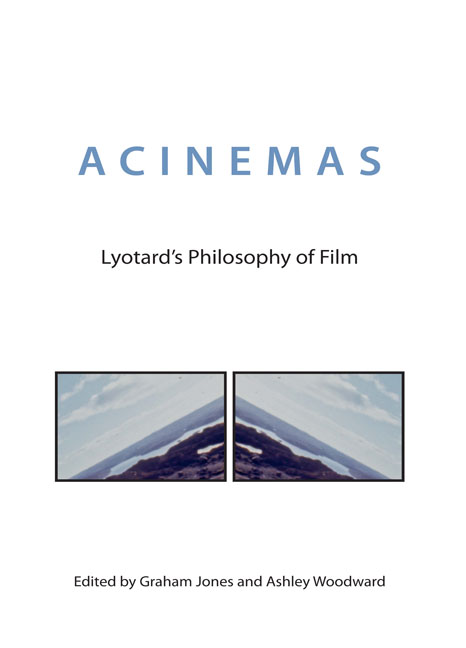Book contents
- Frontmatter
- Contents
- Acknowledgements
- Abbreviations
- Translators’ Note
- I Openings
- II Lyotard's Essays on Film
- 4 Acinema
- 5 The Unconscious as Mise-en-scène
- 6 Two Metamorphoses of the Seductive in Cinema
- 7 The Idea of a Sovereign Film
- III Approaches and Interpretations
- IV Applications and Extensions
- Appendices
- Notes on Contributors
- Index
4 - Acinema
from II - Lyotard's Essays on Film
Published online by Cambridge University Press: 23 June 2018
- Frontmatter
- Contents
- Acknowledgements
- Abbreviations
- Translators’ Note
- I Openings
- II Lyotard's Essays on Film
- 4 Acinema
- 5 The Unconscious as Mise-en-scène
- 6 Two Metamorphoses of the Seductive in Cinema
- 7 The Idea of a Sovereign Film
- III Approaches and Interpretations
- IV Applications and Extensions
- Appendices
- Notes on Contributors
- Index
Summary
THE NIHILISM OF CONVENTIONAL MOVEMENTS
Cinematography is the inscription of movement, a writing with movement, a writing with movements – all kinds of movements: for example, in the film shot, those of the actors and other moving objects, those of lights, colours, frame and lens; in the film sequence, all of these again plus the cuts and splices of editing; for the film as a whole, those of scene organisation [découpage]. And over or through all these movements are those of the sound and words coming together with them.
Thus there is a crowd (nonetheless a countable crowd) of elements in motion, a throng of possible moving bodies which are candidates for inscription on film. Learning the techniques of filmmaking involves knowing how to eliminate a large number of these possible movements. It seems that image, sequence and film must be constituted at the price of these exclusions.
Here arise two questions that are really quite naive considering the deliberations of contemporary cine-critics: which movements and moving bodies are these? Why is it necessary to select, sort out and exclude them?
If no movements are picked out we will accept what is fortuitous, dirty, confused, unsteady, unclear, poorly framed, overexposed… For example, suppose you are working on a shot in video, a shot, say, of a gorgeous head of hair à la Renoir; upon viewing it you find that something has come undone: all of a sudden, swamps, outlines of incongruous islands and cliff edges appear, lurching forth before your startled eyes. A scene from elsewhere, representing nothing identifiable, has been added, a scene not related to the logic of your shot, an undecidable scene, worthless even as an insertion because it will not be repeated and taken up again later. So you cut it out.
We are not demanding a raw cinema, like Dubuffet demanded an art brut. We are hardly about to form a club dedicated to the saving of rushes and the rehabilitation of clipped footage. And yet… We observe that if the mistake is eliminated it is because of its incongruity, and in order to protect the order of the whole (shot and/or sequence and/or film) while banning the intensity it carries.
- Type
- Chapter
- Information
- AcinemasLyotard's Philosophy of Film, pp. 33 - 42Publisher: Edinburgh University PressPrint publication year: 2017



